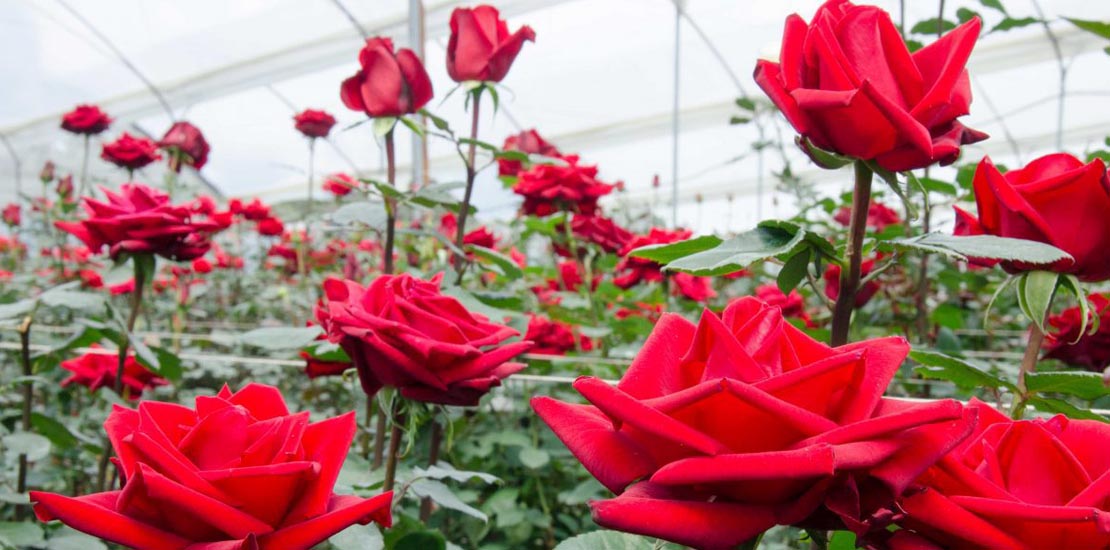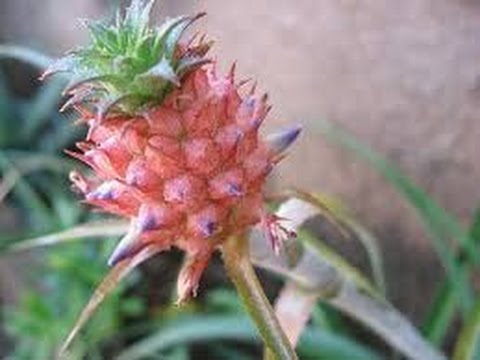Este post também está disponível em:
Português
English
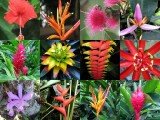
Tropical flowers of exuberant beauty will adorn many parties this holiday season. Flower cultivation plays a key role in preserving varieties.
Much of the beauty of Christmas parties in the southeast of the country depends on tropical flowers grown on a large scale in the Northeast.
Pernambuco is the state that produces the most tropical flowers in Brazil. There are hundreds of varieties: alpinias, emperor sticks, tropical orchids, anthuriums, heliconias, sorbets and ornamental pineapples.
The tropical flowers of exuberant beauty will adorn many parties this year in the northeast and southeast regions of the country. “We prioritize some plants even in colors, including those that sell more at Christmas, such as red.
We prepare a little before doing the fertilization and cleaning in the months leading up to December, “says Rafael Nunes, producer.
On the farms, the season is a rush to wash, pack and send the tropical flowers.
The price, depending on the species, varies from R$ 0.80 to R$ 3 a unit. The annual turnover of the sector exceeds R $ 25 million. They last up to 20 days. The durability and exotic shapes have won over consumers.
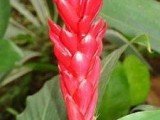
The end of the year is the best time for producers of tropical flowers. Orders grow by about 40%. From the plantations, the plants they follow for graduation parties, weddings and Christmas and New Year get-togethers.
Most varieties of tropical flowers peak in production from October to December. As it coincides with the period of parties, celebrations, then it becomes very sought after.
It is produced a lot and is also very popular for sale.
Videos about the cultivation of Tropical Flowers in the Northeast
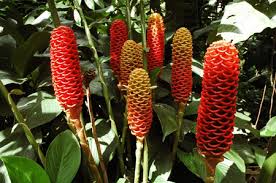
Cultivation of Flowers Tropical in the Northeast
The cultivation of tropical flowers in the northeast plays a key role in preserving some varieties that were disappearing with deforestation. “As some tropical areas are increasingly being reduced in the world, having them in commercial cultivation is preserving the species,” says Rafael.
The main varieties of tropical flowers are alpines, emperor sticks, tropical orchids, anthuriums, heliconias, sorbets and ornamental pineapples.
Scientific Name: Alpinia purpurata
Popular Names: Alpinia, Red Ginger
Family: Zingiberaceae
Category: Shrubs, Tropical Shrubs, Perennial Flowers
Climate: Equatorial, Oceanic, Subtropical, Tropical
Origin: Asia, Indonesia, Oceania
Height: 1.2 to 1.8 meters
Luminosity: Half Shade, Full Sun
Life Cycle: Perennial
Orchid
The orchid is a plant highly valued for the beauty and originality of its flowers. Orchids form one of the largest plant families in the world, with more than 20,000 species and more than seven hundred genera.
Brazil has more than 3,500 native species. Growing orchids is a hobby for many people.
Orchids grow almost everywhere in the world, except in the polar regions. Mostly, they prefer warm tropical areas. They can grow in the ground, completely underground, or attached to other plants and rocks.
Species found on other plants and rocks have roots hanging in the air or attached to the plant or rock. They draw moisture and nutrients from rainwater, decomposed plant matter or the air itself.
The height of orchid plants varies from less than 2.5 centimeters to more than 4.6 meters. There may be a single flower or clusters of them. The flowers are between 2.5 millimeters and 38 centimeters in diameter.
The coloration is very varied and some flowers have spots or stripes. Many have a strong scent and others absolutely no scent at all.
Of medium size, alpinia is a plant that blends very well with tropical landscapes. It produces beautiful inflorescences with small white flowers and red or pink bracts on upright stems. The leaves are also ornamental. Very hardy, this plant is also used as a cut flower.
Like other ginger, this plant appreciates soils rich in organic matter and irrigated regularly. It should be grown in full sun or half shade. It multiplies by cuttings that form on the bracts or by dividing the clumps, taking care to leave a good part of the rhizome and leaves with each cutting. It is not resistant to cold.
See Growing and Caring for Orchids
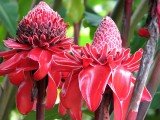
Emperor’s staff
The Emperor Stick is a species of ginger, with very striking and showy flowers. The foliage is typically tropical, with long stems and broad, leathery leaves.
The inflorescence, which gives the plant its name, is characterized by having red bracts, with red flowers and a yellow lip, supported by a long and robust stem. It enhances tropical and contemporary gardens, planted singly or in groups.
Blooms in spring and summer. It is also excellent as a cut flower, composing very elegant and durable floral arrangements. There are also varieties with pink and white flowers.
It should be grown in half shade, in fertile soil rich in organic matter, and irrigated frequently. It is not tolerant to frost, cold and strong winds. It multiplies by clump division, rhizomes and seeds.
Scientific Name: Etlingera elatior
Common Names: Emperor’s Wand, Redemption Flower, Wax Flower, Torch Ginger
Family: Zingiberaceae
Category: Shrubs, Tropical Shrubs, Perennial Flowers
Climate: Equatorial, Subtropical, Tropical
Origin: Indonesia
Height: 3.6 to 4.7 meters
Shade: Half Shade
Life Cycle: Perennial

Anthuriums
The Anthuriums belong to the Araceae family and their scientific name is Anthurium Andraeanum. The origin of Anthuriums is Central and South America.
The Anthurium flower is small and the colorful and exotic part, which we usually think is the flower, is actually an inflorescence, that is, the set formed by the spadix (ear where the tiny flowers sprout) and spathe of the anthurium (colored bract, or the modified leaf).
Anthurium’s real flowers are the little yellow dots that sprout on the spike.
But Anthurium does not only impress with the beauty of its inflorescence. Its heart-shaped (codiform) leaves, which vary in size depending on the species, are extremely exotic.
Availability
Anthuriums can be found all year round.
Variety
Anthurium Alabama, Anthurium Amis, Anthurium Bird Luxury, Anthurium Black Love, Anthurium Black Queen, Anthurium Dakota, Anthurium Green King, Anthurium Natalie, Anthurium Opirus, Anthurium Otazu, Anthurium Pink Expression, Anthurium Red Queen, Anthurium Red Victory, Anthurium Red Winner, Anthurium Sierra, Anthurium Snow Ring, Anthurium Sumi, Anthurium Tangerine, Anthurium Vitara, Anthurium White Champion and Anthurium White King.
Basic care
Like any tropical plant, it needs temperatures above 15º C and half light (it cannot be in direct sunlight). Leave the soil in the pot always moist and aerated, watering 2 to 3 times a week, one of which can be done over the plant. Transplanting, depending on the size, the anthurium can grow to a height of 90 cm.
Heliconias – tropical charm
Tropical and exotic plants constitute one of the greatest riches of our flora. Exuberant, colorful, with unusual shapes, they are appreciated in the international market also for their durability and the ability, even alone, to generate surprising compositions.
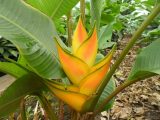
A good example of this type of plant are the heliconias, whose market has become increasingly inviting. It is worth knowing the technical aspects of their cultivation.
Heliconias are plants of neotropical origin, more precisely from the northwestern region of South America. Originally included in the Musaceae family (the banana family), the genus Heliconia later came to constitute the Heliconiaceae family, as its sole representative.
The name of the genus was established by Linnaeus in 1771, in reference to Mount Helicon, located in the region of Beocotia, Greece, where, according to mythology, Apollo and his Muses resided.
The genus Heliconia is still very little studied and the number of existing species is still uncertain, ranging from 150 to 250 species.
Six species occur in the South Pacific Islands, Samoa and Indonesia. The others are distributed in Tropical America from southern Mexico to northern Santa Catarina, southern Brazil. Heliconias, depending on the species, occur at altitudes ranging from 0 to 2,000m, although few are restricted to the higher regions. They occur predominantly on the edges of forests and riparian forests and in clearings occupied by pioneer vegetation. They thrive in shaded or full sun, moist to slightly dry sites and on sandy-clay soils.
Here in Brazil, about 40 species occur naturally in our country and are known by various names, depending on the region: bananeira-de-jardim, bananeirinha-de-jardim, bico-de-guará, falsa-ave-do-paraíso and paquevira, among others.
Heliconias are used as garden plants or cut flowers. Their acceptance as cut flowers has been growing, both in the national and international markets.
The reasons that favor their acceptance by the consumer are the beauty and exoticism of the bracts that surround and protect the flowers, very showy, of intense and exuberant color and, in most cases, with contrasting shades; besides the rusticity; the good resistance to transport and the long durability after harvest.
If the purpose is to be used as a cut flower, the most suitable species for cultivation are those that have small, light, erect inflorescences, of great durability and with floral stems of small diameter, although the hanging inflorescences, despite the difficulties of packaging, also have a great market value.
Heliconias are geophytes and rich in nectar
Heliconias are rhizomatous herbaceous plants, which measure from 50 cm to 10 meters in height, depending on the species. The leaves come in various sizes. The species have an underground rhizome which is usually used for propagation.
The inflorescences may be erect or pendulous, with the bracts distributed on the axis in the same or different planes.
A single species, H. reptans Abalo e Morales, has a horizontal inflorescence, which is spread out along the ground during its development.
Heliconia flowers are appreciated by hummingbirds because they are rich in nectar. The berry-like fruit is green or yellow when immature and dark blue when fully ripe. It usually contains one to three seeds, 1.5 cm in diameter.
Regarding the form of reproduction, it is interesting to note that heliconia are considered geophytes, that is, they reproduce not only by their seeds, but also by their specialized underground organs, whose main function is to serve as a source of reserves, nutrients and water for seasonal development and thus ensure the survival of the species.
The flowering period of the plant varies from species to species and is affected by climatic conditions. Peak production usually occurs in early summer, declines in the fall and ceases in winter, when the average temperature approaches 10ºC.
Heliconias have been increasingly commercialized in the international market due to the increase in the production area in Central and South American countries, which provides a greater supply of the product and its greater dissemination.
The main producing countries are Jamaica, Costa Rica, United States (Hawaii and Florida), Honduras, Puerto Rico, Suriname and Venezuela.
There are also commercial cultivations in the Netherlands, Germany, Denmark and Italy, but under protected conditions. In Brazil, cultivation areas are already found in the states of Rio de Janeiro, São Paulo, Santa Catarina and Pernambuco, with expansion to the states of Amazonas and Ceará.
Among the species and hybrids most commercialized as cut flowers are: H. psittacorum, H. bihai, H. chartaceae, H. caribaea, H. wagneriana, H.stricta ,H. rostrata and H. farinosa.
The main importing countries are the United States, the Netherlands, Germany, Denmark, Italy, France and Japan.<nbsp; The pendulous inflorescences are more valuable in the market, but their cultivation is more difficult, the production is lower and the investment in handling, packaging and transportation is high.
Propagation of Heliconias
Heliconias can be multiplied either by seeds or by rhizome division. Heliconia species have survived for hundreds of years thanks to the successful exchange relationship with their pollinators (hummingbirds and bats) and seed dispersers (rodents, birds and squirrels).
The plant provides them with carbohydrate-rich nectar and the pulp of its fruit, and in return the pollinators transfer the pollen and the dispersers distribute the seeds.
When grown outside their natural habitat, away from pollinators, many species may not produce seeds at all.
The seeds must also be ripe and fresh and need light to germinate.
Each fruit usually contains three seeds that may be surrounded by a rather hard endocarp, which can make germination difficult. The ideal condition is to sow them in a humid, sunny and warm environment (25 to 35oC), and a fungicide treatment is advised to prevent rotting.
For most species, heliconia seeds germinate within 120 days, but some take up to three years. A practical method to promote seed germination is to place them in plastic bags with moistened vermiculite or sphagnum moss in a warm, shaded environment until they germinate, when they should be planted.
The method of propagation by rhizome division is most commonly used. Rhizomes are specialized stems that grow horizontally both above and below the soil surface. Heliconias have a “branched” type of rhizome.
New shoots normally develop at the base of an upright pseudostem. The division of the rhizome system involves both the horizontal rhizome and the vertical pseudostems.
For propagation, a rhizome portion measuring at least 10 to 12.5 cm is recommended, consisting of three to five pseudostems (cut 20 to 30 cm long), with associated basal buds and free of soil particles.
After washing and removing the dead portions, the rhizome should be given further phytosanitary care, with the application of insecticides and fungicides to control fungi, insects and nematodes (in this case, control can be done with hot water, between 40 and 42 degrees C, for 15 to 30 minutes, depending on the size of the portion).
A practical method for propagation is to place the already disinfected rhizome in dark plastic bags, closed and protected from the sun, placing moistened paper inside the package. It is kept for a period of two to three weeks, when the roots begin to develop. When they are well expanded, planting can proceed.
Cultivation of Heliconia
The spacing for growing heliconia will depend on the species used. Species that have light and erect inflorescences should be planted at a spacing of 30 cm apart, with a density of three plants per linear meter.
Planting is carried out in the center of beds 0.9 m wide. Very wide beds make it difficult to harvest the inflorescences and encourage the development of stoloniferous plants in the central part due to the difficulty of light penetration. Between the beds, distances between 1.0 and 1.5m are recommended.
For species that produce heavy, erect or pendulous flowers and form large clumps, with plants over 1.5 m high, a spacing of 0.8 x 0.8 m or more is recommended, also in beds spaced 1.0 to 1.5 m apart.
The old pseudostem eventually dies, but new ones develop at the base of the plant. Sprouting and the development of new roots usually happens about 3 to 4 weeks after planting.
Planting of Heliconias
Ideal time: coldest period of the year
Temperature: 21°C at night and 26°C during the day
Luminosity: between 60 and 40% in summer to avoid high soil temperatures, after the leaves cover the sun, the light can be gradually increased, until full insolation, or maintained at 70%.
Substrate
It is recommended to initially use vermiculite, perlite, among others, and then transplant the seedlings to the definitive location.
Depth: 10 cm for planting rhizomes in beds pH suitable for cultivation: between 4.5 and 6.5.
Light and Temperature
Heliconias, depending on the species, can be grown from full sun to shady places. Preference should be given to species grown in full sun, as they require less investment. All the species mentioned above as the most sought-after as cut flowers are suitable for cultivation in full sun.
In field conditions, in very dense crops, plants may become stunted, as it is difficult for light to penetrate the center of the beds.
The ideal temperature range for heliconia production is between 21 and 35 degrees C, the higher the temperature, the higher the production and the faster the development.
Temperatures below 15oC are detrimental to normal plant development. Below 10 degrees C, growth ceases. It is recommended to avoid locations where there are variations of more than 10 degrees C between day and night temperatures. In addition, heliconias require high relative humidity.
Fertilization and Irrigation
Fertilization greatly influences growth and flower production, especially under high light. In addition, heliconias are plants that prefer slightly acidic soil. If it is necessary to correct the soil to obtain the right level of acidity for cultivation (pH between 4.5 and 6.5), it is recommended to add dolomitic limestone in addition to macro and micronutrients, about 30 days before planting.
At the time of planting, the ideal is to make an organic fertilization, incorporating decomposed leaves and tanned farmyard manure (40 l / meter of bed) into the soil. Fertilizing in two to three installments per year with 3 kg/m2 of the NPK formula 18-6 -12 results in rapid development and flowering.
Irrigation should be abundant, especially after leaf emergence, maintaining soil moisture. In dry areas, it is recommended to irrigate two to three times a week, avoiding soaking the soil. The most suitable methods are drip and low sprinkling.
On the other hand, high sprinkling should not be used, as the water drops can reach the inflorescences or even settle inside the bracts of the erect inflorescences, causing the flowers to rot and favoring the proliferation of insects.
Cultivation, pests and diseases: the clumps should be divided and replanted after two years of cultivation. To prevent the clumps from becoming too dense, it is best to cut the stems that have already flowered at ground level.
Sometimes it is necessary to support the plants using wire supports stretched along the beds to prevent them from toppling over due to wind or their own weight.
Every year, the beds should be covered with organic matter, using leftover leaves, bagasse or other available composts.
As for Pests and Diseases
The main problem of the crop is the occurrence of nematodes, which require for their control the treatment of the soil before planting.
The occurrence of mites, mealybugs and aphids is rare. Among the diseases, fungal diseases stand out, caused mainly by Phytophtora and Pythium.
Magnificent Ginger, Zingiber Spectabile or Sorbet
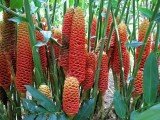
Ginger is a plant considered exotic due to its distinctive shape that resembles an ice cream cone. It can be an excellent addition to your garden or landscaping project, however, we warn that it is a purely ornamental plant and should not be consumed in any way.
The look of this plant has a fantastic feel that offers a greater ornamental value to the places where it is present.
A type of plant that stands out and goes very well in the most varied types of environment. Also remembering that it can be grown in bouquets, next to walls or even in planters.
A beautiful plant that deserves the magnificence of its name, those who live in a region where there is no intense cold season should bet on this alternative for cultivation.
The ornamental ginger Zingiber spectabilis Griff; known as shampoo; maraca; ice cream; is a tropical ornamental plant; of Asian origin; native to Malaysia. Belonging to the family Zingiberaceae; of the order Zingiberales; it has inflorescence with yellow bracts until the reddish-pink coloration.
This specimen belongs to the family Zingiberaceae and is within the category shrubs, foliage and perennial flowers. Among the preferred climates of this plant that has its origin in Malaysia or Asia are subtropical, equatorial and tropical.
The height this plant can reach is between 1.2 to 1.8 meters and the light it prefers is half shade. Its life cycle is perennial, it is a very interesting plant in terms of its shape that really resembles a large ice cream.
Description of the Magnificent Ginger
This plant is a herbaceous plant typical of tropical regions and that can be easily found in forests of southern Thailand. A plant that has strong stems that grow along the rhizome, always erect and resembling a cane.
They can reach approximately 1.5 to 2 meters in height.
The leaves of ginger are long, very green and have a velvety appearance on the inside. At the base of the plant there are inflorescences that originate directly from the rhizome. The support of this plant is due to strong and erect stems that measure around 40 cm.
Flowers of the Magnificent Ginger
The ginger has flowers that are yellowish or white and have a great secondary ornamental value since they are small and open gradually between the bracts. The bracts are arranged in a way that they create alveoli, this differentiated texture has earned it the name Beehive Ginger (ginger-hive) in English.
The inflorescence as a whole has a look reminiscent of a pineapple due to its cylindrical and fusiform look. When young, the bracts of this plant take on a greenish to pale yellow color. As time goes by, the bracts turn red.
A very positive point of this plant is that its inflorescences last a long time, so they can be used as a cut flower to assemble beautiful tropical arrangements.
Magnificent Ginger in Landscaping
The magnificent ginger is an excellent alternative to be grown in borders or even next to walls or in clumps that are under the canopy of trees. One of the landscaping highlights of this plant are its leaves which have a beautiful, tropical look, however, it is sensitive to burns and so should avoid direct sunlight.
Under ideal conditions these plants are fast growing, can be grown in pots or even in planters, this helps to control the growth of the plant. During the summer the inflorescences appear and also the scent of ginger one of the highlights of this plant.
Ornamental Ginger
The plant that has its origin in Thailand receives different names in each region of the country and can be known as ginger-magic or ornamental ginger. It is a very cold-sensitive plant that prefers to be cultivated in half-shade regions.
Because it is an exuberant herbaceous it is quite ornamental, its cylindrical inflorescence has bracts that start yellow and over time change color until they reach a shade of intense red with a beautiful glow effect.
The flowering of the ginger-magic takes place during the summer and the result can be seen in rigid stems that can reach up to 30 cm in height. The number of flowers is also noteworthy. When this plant is used in landscaping projects it is ideal that it is grown in an environment where it is possible to leave the lower part of the plant showing since its flowers are born very close to the ground.
Cultivation of the Ginger-Magnificent
The cultivation of this plant should be done in semi-shade and preferably in a fertile soil that has been enriched with organic matter and that is kept moist. The preferred climates of this plant are warm and its life cycle is perennial. However, these plants can still be grown in Mediterranean, subtropical or temperate climates.
An interesting detail about this plant is the fact that it goes into dormancy in winter and therefore must be well protected from the harsh cold in greenhouses. To multiply this plant the tip is to use the technique of stem cuttings, seeds or even division by clumps.
We emphasize that the plant can be grown all year round and can always have a good result. The duration of this plant is indefinite and its germination takes place in a period between 15 and 25 days. The number of plants that will be successful in this planting varies according to the conditions of the environment, soil and cultural treatment.
Special tips for cultivation
Ginger plant root
In order for the ginger plant to grow healthy, it is important to water the plant twice a week.
Luminosity
Grow it in half shade.
Seedlings
The seedlings should be made from the separation of shoots that emerge around the main plant.
Poda
If you realize that there is a need to prune the plant, preferably do this pruning after flowering.
Cleaning
After the plant has finished flowering, clean the plant.
Fertilizer
To ensure that your plant grows healthy, fertilize it using mineral fertilizer that should have an NPK 04-14-08 formulation. The formula contains more Phosphorus because this element helps to make it grow faster.
Ornamental pineapple – Ananas bracteatus.
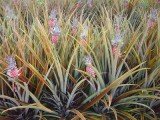
The Ornamental Pineapple, is a plant with the scientific name Ananas Bracteatus, and popularly known as: red pineapple, ornamental pineapple, red pineapple, wild pineapple and dwarf pineapple.
The ornamental pineapple is characterized by being a small pineapple (approximately 05 cm in diameter), and is a plant of the Bromeliad species (a very important species, targeted and considered in the ornamental plant market), of South American origin (more precisely in Brazilian lands).
The Ornamental Pineapple is a rustic bromeliad, having a perennial life cycle (habits), being a herbaceous, stemless and terrestrial plant, and has a small degree of polymorphism.
The Ornamental Pineapple is formed by a rosette of leaves with a lanceolate appearance, these leaves being thick and wide. Its foliage and fruit are purely ornamental. The plant is not grown for consumption.
Due to the characteristics of its leaves and fruits, which are long-lasting, the plant can be grown in open spaces without any problem. The ornamental pineapple is fully adaptable to humid tropical and subtropical climates. It is a plant with high sensitivity to low and cold temperatures.
As it is a plant very much focused on the ornamental side, the ornamental pineapple is widely used in decorations, as it is a very beautiful plant that has special and unique characteristics.
In addition, ornamental pineapple is considered a plant with an aggressive characteristic (due to its thorns), and for this reason, many people use ornamental pineapple in order to separate, isolate and delimit certain areas, spaces or beds that cannot have their places being accessed by someone (whether people or animals). Therefore, ornamental pineapple can be planted singly or in groups.
The Leaves, Flowers and Fruit of the Ornamental Pineapple
Its leaves are elongated in shape, greenish and have thorns on the edges. The fruits of the ornamental pineapple are red in color. However, there are species that have leaves with different colors and shades, the best known species being Striatus, with a white and cream color.
The leaves of the ornamental pineapple are 0.7 to 1.0 m long and 3.0 to 4.0 cm wide. The leaves are stiff and ascending, with a strong, stout thorn and smooth margins.
The ornamental pineapple has an inflorescence which is basically a long stem of 80 cm, covered with a white coating and concluded by bracts which are similar to the leaves.
The fruit of the ornamental pineapple can last a long time on the plant. It is around 05 cm in diameter, with shades of colors ranging from yellow, pink and red. The fruit of the ornamental pineapple is very fibrous, has few seeds, but is not edible, being used as a decoration piece.
The ornamental pineapple is a plant that blooms spontaneously at any time of the year.
Ornamental pineapple should be grown in full sun or half shade, in soil with a good degree of fertility, preferably light and enriched with organic material (compost and fertilizers).
The ornamental pineapple needs to be watered regularly, besides being a plant that does not adapt and therefore does not accept cold and frost (that is why it appeared in Brazil and in tropical and subtropical areas).
The ideal is that when doing any manipulation on this plant, use gloves preferably with a thick texture, to avoid injuries, as the leaves have thorns.
The Reproduction of Ornamental Pineapple
The ornamental pineapple reproduces extremely easily by vegetative means. The plant reproduces and multiplies by dividing the clump (the so-called side shoots) and by the seedlings that are formed in the crowns of the fruit.
Young plants emerge from the axillary buds between the leaves and the fruit crowns, and these can also be planted. However, the scale multiplication of ornamental pineapple is being done by micro propagation process.
Therefore, ornamental pineapple can also be grown in pots, and its cultivation is exclusively for ornamental effect.
The Cultivation of Ornamental Pineapple
The ornamental pineapple should be grown in half shade or full sun, avoiding low temperatures. The soil should be fertile, light and if possible enriched with organic material (compost and fertilizers) and regular watering should be carried out. Ornamental pineapples can be grown at home in pots, by keeping the room temperature above 15 degrees Celsius.
above 15 degrees and watering when the soil is dry. Another care to be taken is with your own hands, due to the various existing thorns, be sure to use appropriate gloves and preferably thick.
Scientific Name: Ananas bracteatus
Popular Names: Pineapple-ornamental, Pineapple-red, Pineapple-ornamental, Pineapple-red
Family: Bromeliaceae
Category: Shrubs, Tropical Shrubs, Bromeliads
Climate: Equatorial, Subtropical, Tropical
Origin: South America, Brazil
Height: 0.6 to 0.9 meters
Luminosity: Full sun
Life Cycle: Perennial.
